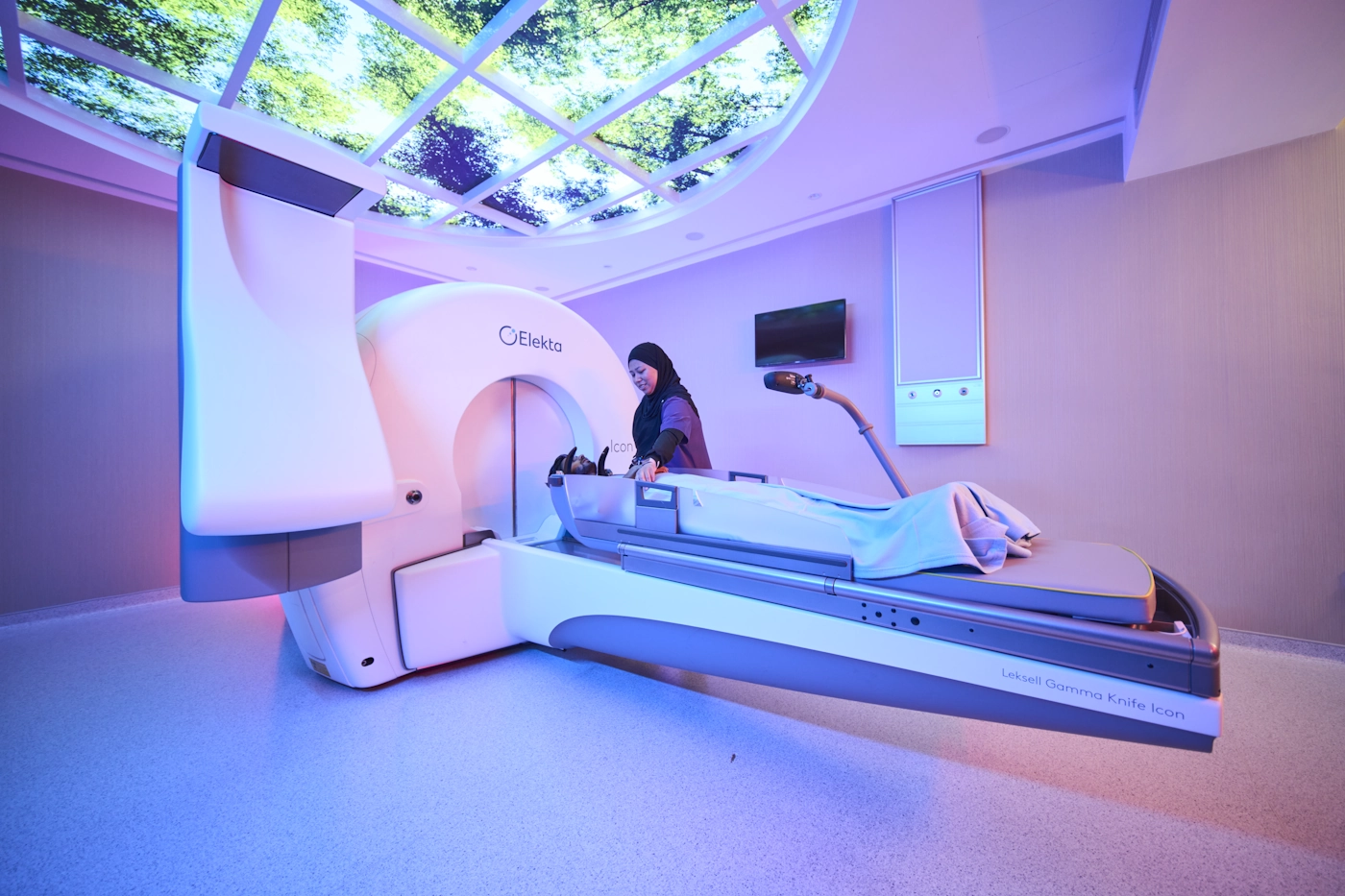

伽玛刀手术是一种放射治疗形式,可以精确地将数百个单独的激光束聚集在肿瘤上。它使用计算机化的治疗计划软件来帮助医生高精度地定位和照射头部和大脑中的小目标。伽玛刀治疗可将强烈的辐射剂量输送到目标区域,同时保留周围的健康组织。它通常用作化疗、手术和其他形式的放射肿瘤学的辅助或替代治疗。
高准确度和精确度:允许对健康周围组织具有较低毒性的强效辐射剂量。
非侵入性:由于没有切口,因此由于出血、感染或脑脊液泄漏而导致并发症的风险较低。
无痛且快速恢复:无需康复,患者可以在短时间内恢复活动。
住院时间为零或最少:治疗通常以门诊进行,偶尔需要住院过夜。
答:安装头部框架时,将注射局部麻醉剂,可能会感到一些疼痛(来自于注射)。实际的伽玛刀治疗是完全无痛的。
答:扫描和伽玛刀治疗将占用一天的大部分时间。您在伽玛刀机上实际花费的时间将取决于目标部位的大小以及需要射多少次。时间从30分钟到几个小时不等。
答:不会。
答:您唯一会感觉到的是头部框架压在头皮上的压力。您可能还注意到房间内有一个闪烁的红灯,表示正在进行治疗。
答:这种情况不太可能发生。然而,如果接受治疗的区域靠近皮肤表面,则可能会发生脱发。
答:通常,目标细胞的变化需要数月的时间才能发生。您需要定期随访和MRI扫描来监测任何变化。如果您正在接受癌症治疗,您的顾问将在治疗后四周见您,并在治疗后六周对您进行MRI扫描。
患有良性肿瘤的患者将在治疗后六个月进行复查,并预约 MRI 扫描。
答:只要您觉得自己足够健康。这可能是治疗后的第二天,也可能需要几天时间。


